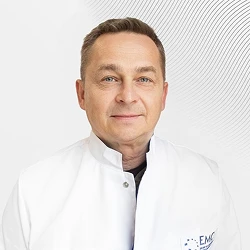Several natural births or even just one birth, but with a large child, can provoke a woman genital prolapse - a condition, in which the female genital organs (cervix, uterus), as well as the bladder and the rectum falls out into the vagina or beyond.
One of the common causes of genital prolapse in women is trauma during childbirth, when the strengthening ligaments of the pelvic floor are torn during the passage of the child through the birth canal. As a result, the pelvic organs become unable to be fixed in their natural anatomical places and eventually fall out into the lumen of the vagina. Another cause of genital prolapse is congenital defects of connective tissue: such cases of prolapse are often noted in women with varicose veins, excessive joint mobility, mitral valve prolapse, etc.
Symptoms of genital prolapse
Women with genital prolapse complain of heaviness in the pelvic region, difficulty urinating, constipation, and sometimes, with complete prolapse, patients report discomfort when walking, bleeding, and a constant feeling of heaviness.
Approximately one in three women with genital prolapse reports urinary incontinence - loss of urine when coughing, sneezing, laughing, which causes significant inconvenience and restricts freedom of movement.
It is worth noting that the initial stages of genital prolapse without treatment often progress to complete prolapse over time.
Diagnosis of genital prolapse
Diagnosis of genital prolapse, as well as its severity, is performed upon examination by a gynecologist.
Since every third woman with prolapse also has urinary incontinence, urodynamic examination (CDI) is also performed on Laborie equipment at the EMC Gynecology and Oncogynecology Clinic. (It is this equipment that is used for performing CDI in leading medical centers in America and Western Europe.)
Treatment of genital prolapse
At the very initial stages of genital prolapse in women, patients are prescribed conservative treatment in the form of exercises to strengthen the pelvic floor muscles, as well as painless electrical stimulation of the pelvic floor muscles.
The main method of treating genital prolapse is surgical intervention: most of these operations are performed by vaginal access without external skin incisions. Such operations not only do not leave behind stitches and scars, but also allow women to recover quickly after surgery. The essence of the operation is to strengthen the damaged ligaments holding the bladder and rectum, combined with excision of excess overgrown tissues. But with partial or complete prolapse - "prolapse of the uterus" – it may also require its complete removal.
In some cases, there is a need for laparoscopic surgery to "suspend" the pelvic organs using mesh implants (sacrocolpopexy) - most of these operations are performed by EMC surgeons using the latest generation Da Vinci Si robot.
If women with genital prolapse have stress urinary incontinence, EMC gynecological surgeons simultaneously perform a sling operation to treat involuntary urination.
In elderly patients who do not want to undergo major pelvic reconstructive surgery, unique gentle Lefort operations are performed at the EMC, and special supportive devices (pessaries) are selected for the non-surgical treatment of genital prolapse.
Surgeons at the EMC Gynecology and Oncogynecology Clinic have extensive American, European and Russian experience in performing a full range of reconstructive pelvic and minimally invasive operations for genital prolapse and stress urinary incontinence in women. They are ready to help all women suffering from genital prolapse and urinary incontinence, regardless of their severity and associated complications. At the same time, the most gentle and prompt treatment will be selected for each of them.
Was this information helpful?
Questions and answers
Ask a Question
Get a consultation
Timely consultation to prevent negative consequences for your health
The leading European multidisciplinary clinic
We work at the level of the best international standards, introducing and developing advanced treatment methods
600
world-renowned
doctors
doctors
57
treatment
options
options
36
years taking care
of your health
of your health
24/7
we work
at any
convenient time
at any
convenient time
Subscribe to the newsletter
Find out before others about the special offers
and new products of the EMC
and new products of the EMC







.webp)



.webp)



.webp)
